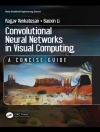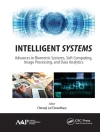Provides an insightful and practical introduction to crowdsourcing as a means of rapidly processing speech data
Intended for those who want to get started in the domain and learn how to set up a task, what interfaces are available, how to assess the work, etc. as well as for those who already have used crowdsourcing and want to create better tasks and obtain better assessments of the work of the crowd. It will include screenshots to show examples of good and poor interfaces; examples of case studies in speech processing tasks, going through the task creation process, reviewing options in the interface, in the choice of medium (MTurk or other) and explaining choices, etc.
* Provides an insightful and practical introduction to crowdsourcing as a means of rapidly processing speech data.
* Addresses important aspects of this new technique that should be mastered before attempting a crowdsourcing application.
* Offers speech researchers the hope that they can spend much less time dealing with the data gathering/annotation bottleneck, leaving them to focus on the scientific issues.
* Readers will directly benefit from the book’s successful examples of how crowd- sourcing was implemented for speech processing, discussions of interface and processing choices that worked and choices that didn’t, and guidelines on how to play and record speech over the internet, how to design tasks, and how to assess workers.
Essential reading for researchers and practitioners in speech research groups involved in speech processing
Tabla de materias
Contributors vii
Preface ix
1 An Overview
1.1 Growing Needs for Speech Data
1.1.1 Origins of Crowdsourcing
1.1.2 Operational Definition of Crowdsourcing
1.1.3 Functional Definition of Crowdsourcing
1.2 Some Issues
1.3 Some Terminology
1.4 Acknowledgements
References
2 The Basics
2.1 An Overview of the Literature on Crowdsourcing for Speech Processing
2.1.1 Evolution of the Use of Crowdsourcing for Speech
2.1.2 Geographic Locations of Crowdsourcing for Speech
2.1.3 Specific Areas of Research
2.2 Alternate Solutions
2.3 Some Ready-Made Platforms for Crowdsourcing
2.4 Making Task Creation Easier
2.5 Getting Down to Brass Tacks
2.5.1 Hearing and Being Heard Over the Web
2.5.2 Prequalification
2.5.3 Native Language of the Workers
2.5.4 Payment
2.5.5 Choice of Platform in the Literature
2.5.6 The Complexity of the Task
2.6 Quality Control
2.6.1 Was that Worker a Bot?
2.6.2 Quality Control in the Literature
2.7 Judging the Quality of the Literature
2.8 Some Quick Tips
References
13 Collecting Speech from Crowds
13.1 A Short History of Speech Collection
13.1.1 Speech Corpora
13.1.2 Spoken Language Systems
13.1.3 User-Configured Recording Environments
13.2 Technology for Web-based Audio Collection
13.2.1 Silverlight
13.2.2 Java
13.2.3 Flash
13.2.4 HTML and Java Script
13.3 Example:WAMI Recorder
13.3.1 The Java Script API
13.3.2 Audio Formats
13.4 Example: The WAMI Server
13.4.1 PHP Script
13.4.2 Google App Engine
13.4.3 Server Configuration Details
13.5 Example: Speech Collection on Amazon Mechanical Turk
13.5.1 Server Setup
13.5.2 Deploying to Amazon Mechanical Turk
13.5.3 The Command Line Interface
13.6 Using the Platform Purely for Payment
13.7 Advanced Methods of Crowdsourced Audio Collection
13.7.1 Collecting Dialogue Interactions
13.7.2 Human Computation
13.8 Summary
13.9 Acknowledgements
References
Index
Sobre el autor
Maxine Eskenazi, Carnegie Mellon University, USA
Dr. Eskenazi is Principal Systems Scientist at the Language Technologies Institute, Carnegie Mellon University, USA. She has authored over 100 scientific papers in the areas of computer assisted language learning and speech and spoken dialog systems. Her work has produced such systems as the Let’s Go spoken dialog system and the REAP vocabulary tutor. She is also the founder and CTO of the Carnegie Speech Company.
Gina-Anne Levow, University of Washington, USA
Dr. Levow is currently an Assistant Professor in the Department of Linguistics, University of Washington, USA. Prior to joining the faculty at the University of Washington, she served on the faculty at the University of Chicago in the Department of Computer Science and as a Research Fellow at the University of Manchester, UK. She served on the Editorial Board of Computational Linguistics and as Associate Editor of ACM Transactions on Asian Language Processing.
Helen Meng, The Chinese University of Hong Kong, Hong Kong
Dr. Meng is Founder and Director of the Human-Computer Communications Laboratory at The Chinese University of Hong Kong, and is also the Founder and Co-Director of the Microsoft-CUHK Joint Laboratory for Human-Centric Computing and Interface Technologies, which was conferred the national status of the Ministry of Education of China (Mo E) Key Laboratory in 2008. Prof. Meng also served as an Associate Dean (Research) of the Faculty of Engineering from 2006 to 2010. She serves as Editor-in-Chief of the IEEE Transactions on Audio, Speech and Language Processing.
Gabriel Parent, Amazon.com, USA
Gabriel Parent is a Software Development Engineer at Amazon.com working on solving natural language related problems. His main research focuses were human-computer interaction through spoken dialog systems and crowdsourcing.
David Suendermann, Baden-Wuerttemberg Cooperative State University, Germany
Dr. Sundermann is currently full Professor of Computer Science at the Baden-Wuerttemberg Cooperative State University, Stuttgart, Germany. He is also the Principal Speech Scientist of Speech Cycle, New York, USA which has been recognized by Deloitte as a ‘Technology Fast 500’ company based on revenue growth. He has authored more than 70 publications and patents, including a book and six book chapters.












